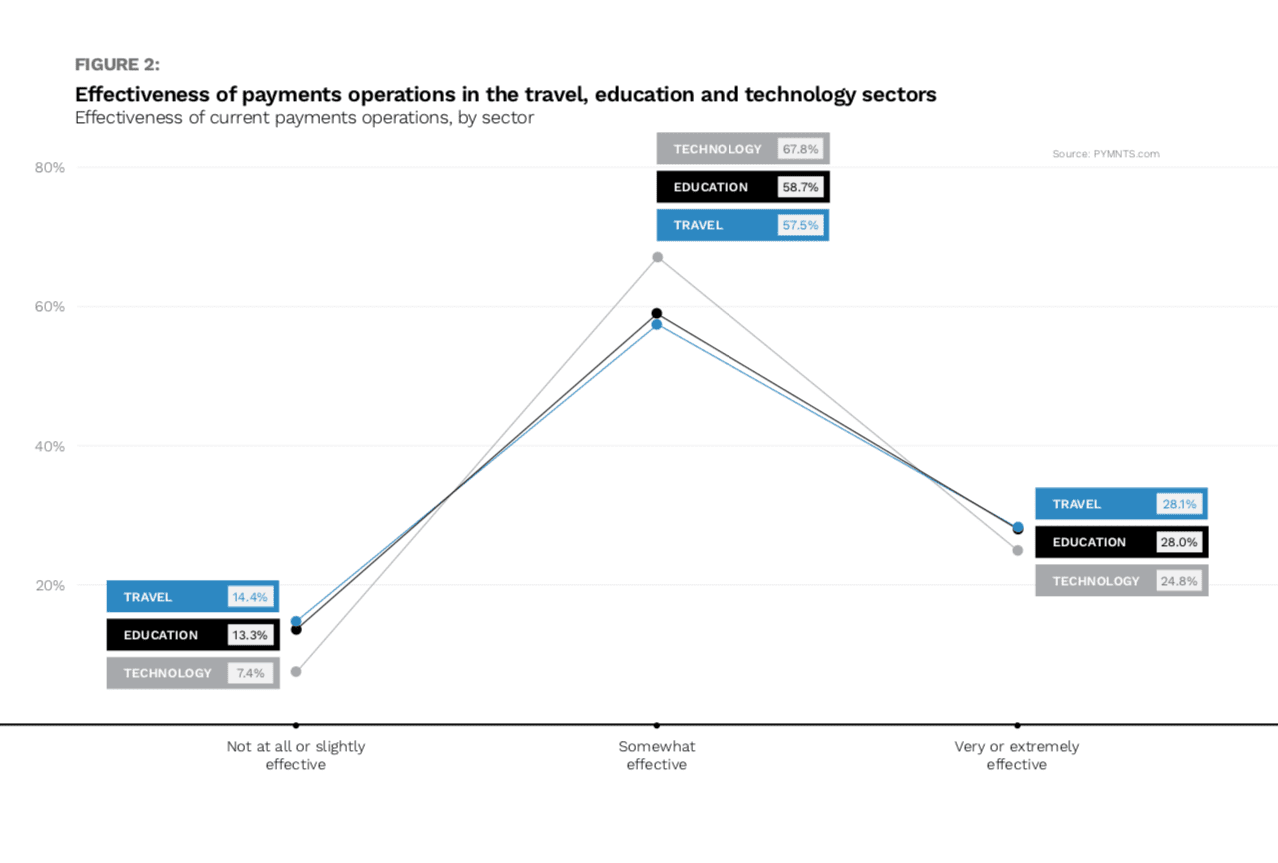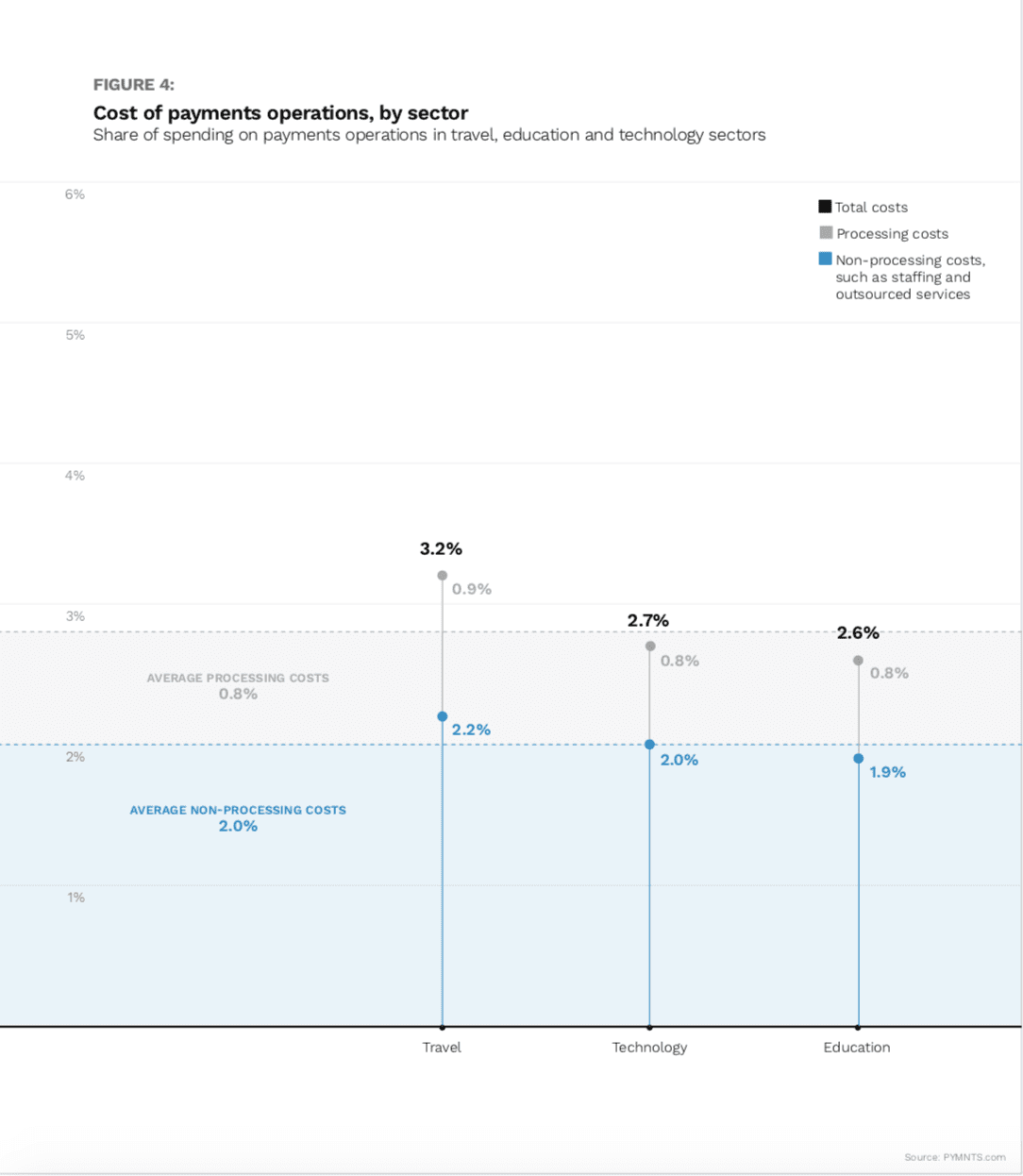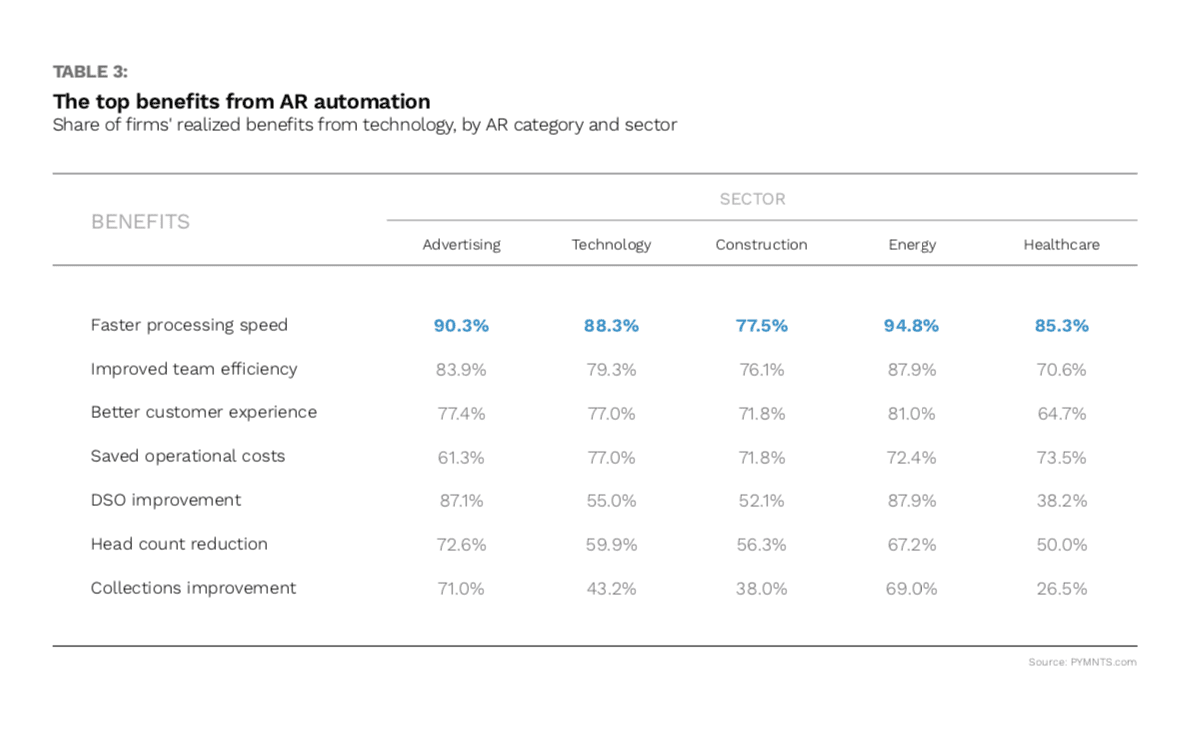Technology, Travel Sectors Discovering Upsides Of ‘Smart Receivables’ Strategy

Enabling accounting teams to manage numerous vendors across regions with one-click efficiency is the dream of treasurers at every tech company. Some dreams come true.
PYMNTS April 2021 Smart Receivables Playbook: How B2B Technology Firms Can Bring Seamless Payments To The Back Office, a Flywire collaboration, gets into the matter of transformation among tech firms whose own digital shifting isn’t quite up to snuff.
Surveying upwards of 500 payments professionals at companies generating more than $100 million in annual revenue — and deriving some of that from cross-border sales in travel and technology — researchers wanted to know and understand trends affecting the B2B technology transformation, along with valuable context for what they mean to accounts receivable (AR) teams going forward.
As demand for tech solutions grows post-pandemic, “Meeting demand requires robust and well-functioning back-office capabilities, and our research shows that many technology executives believe their payments operations are not necessarily up to the task,” per the Playbook. “Just 25 percent of technology firms view these operations as ‘very’ or ‘extremely’ effective — a lower portion of firms than in other sectors. The largest share of these firms — 68 percent — view their payments operations as just somewhat effective.”
With tech firms logging revenue growth throughout 2020 and travel starting to resume, the effectiveness of payments operations in prime verticals has never meant more to so many. That’s why digital is driving itself into every corner of certain sectors with serious urgency.

AP/AR Agony And Ecstasy
While some companies prioritized modernization before COVID-19 existed, others didn’t. That’s left many struggling with manual AP/AR processes, and the timing couldn’t be worse.
Per the new Smart Receivables Playbook, “Some universal challenges specifically impact AR effectiveness across sectors, such as payment delays and complications around processing different forms of payments. The intensity of these various pain points depends a great deal on the nature of the industry and market conditions, however. Financial fraud, managing multiple vendor relationships and international payments are key pain points cited by organizations overall, but they are particularly likely to cause problems for technology firms.”
Elusive real-time transaction data (cited by 9.4 percent) and inability to field customer inquiries (cited by 8.1 percent) continue to haunt treasury teams too, according to the Playbook.
Inefficiency isn’t cheap. As the Playbook states, “A large share of technology firms’ spending likely goes to third parties to handle various complexities around payments and billing. More than half of technology sector firms work with at least one vendor in addition to their payment processing partner. Firms work with third parties to varying degrees in 10 separate areas” with “technology companies … most likely to turn to vendors for support in fraud detection (29 percent), compliance (21 percent) and real-time transaction reporting (20 percent).”
It’s science — but not rocket science. The Playbook puts the facts into stark relief: “Our research shows that more than 88 percent of technology companies that implemented [AP/AR] solutions have realized faster processing speeds, as well as improved team efficiency (79 percent), better customer experience (77 percent) and operational cost savings (77 percent).”

Picking Platforms And Partners For The Long Haul
It gets better the deeper one goes into AP/AR automation, as all manner of treasury snags fall before the processing power of platforms customized to selling in specific verticals.
April’s Smart Receivables Playbook: How B2B Technology Firms Can Bring Seamless Payments To The Back Office notes, “A growing number of companies are placing AR digitization at the center of their investment strategies. A majority of receivables officials in a recent survey indicated they planned to increase their investment in digital technology over the coming years, and the key driver of this investment is the pandemic: 75 percent cited it as a factor, outweighing factors such as economic uncertainty or improving cybersecurity.”
As in so many matters these days, much depends on the company you keep or, more accurately, the partners you choose to help with the task of transformation.
“As firms seek to address longstanding AR pain points through digitization and automation, they should also bear in mind the importance of platforms that are flexible and offer end-to-end capabilities,” the Playbook notes. “These priorities may be especially important with cross-border customers given the additional complexities these relationships often entail.

